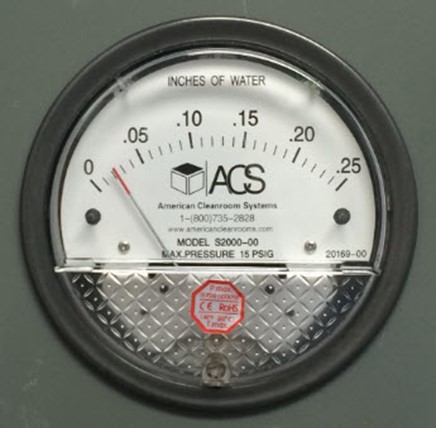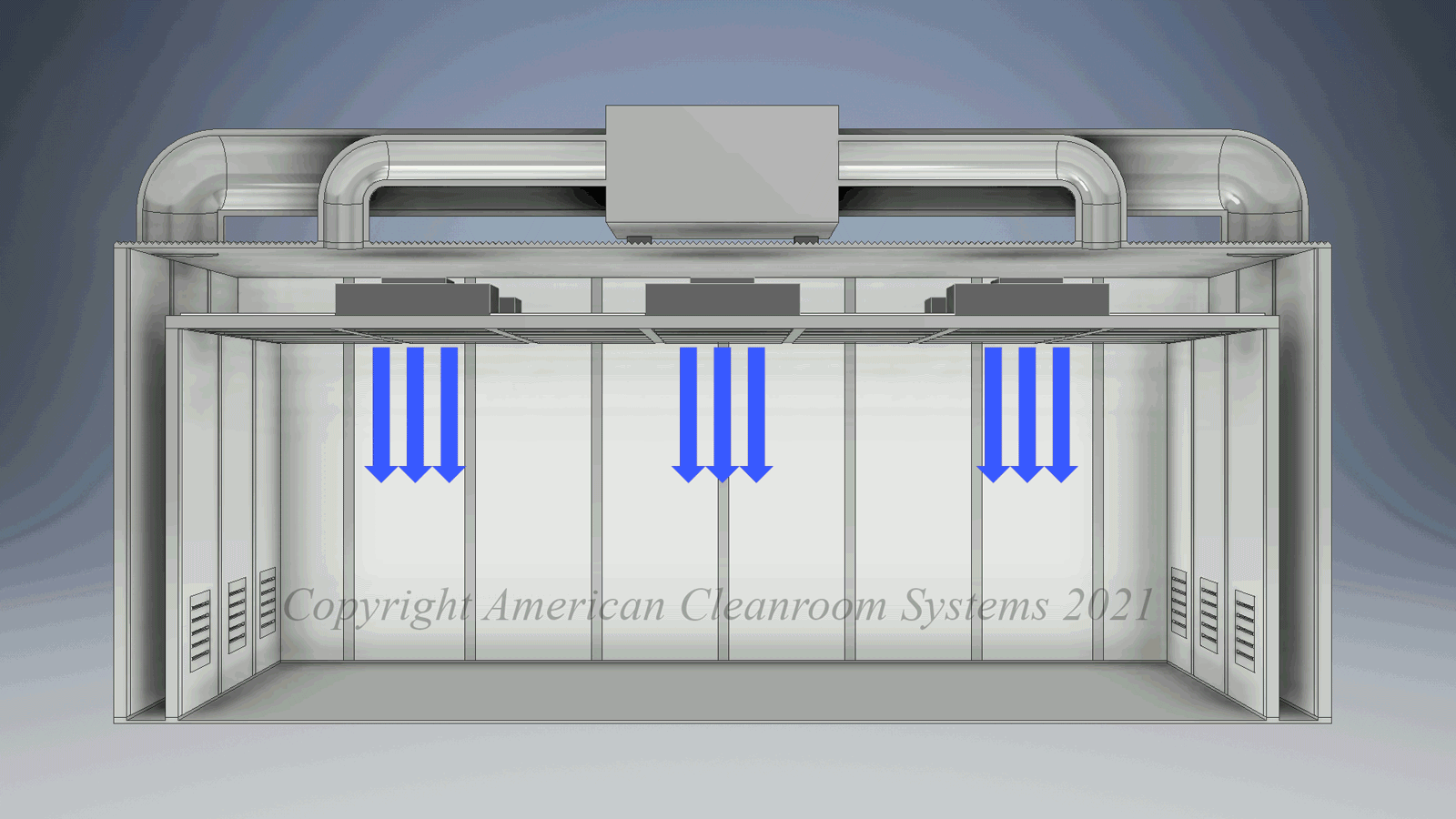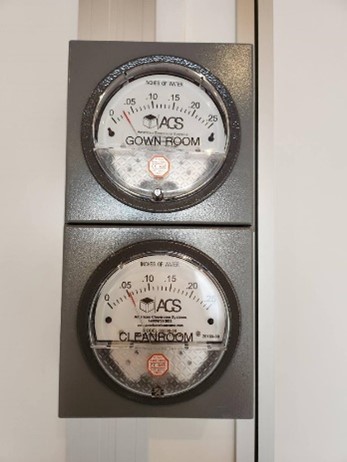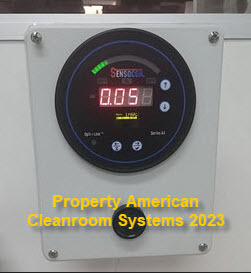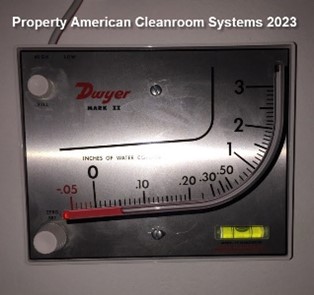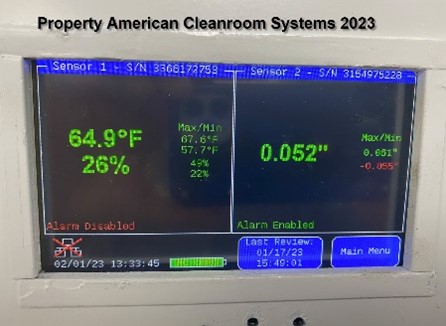In positive pressure cleanrooms, the cleanroom AC system is typically used brings make up air from outside the cleanroom into the cleanroom to ensure the cleanroom is higher pressure than ambient. The AC system injects the makeup air into the plenum where it passes thru HEPA fan filter units to ensure that only clean air is entering the cleanroom.
Typically, a cleanroom has a pressure cascade where the higher class rooms have higher pressure and lower class rooms like gown rooms have lower pressure. This is done so that when door between the two rooms is opened the air flows from the higher class room to the lower class room preventing contaminants from moving into the higher class room. In figure 3 you can see ISO-8/class 100k gown room is at .03” inches of water while the class ISO-77/class 10k higher class main room is at 0.05” of water (higher differential pressure value.
In negative pressure cleanroom the cleanroom is at lower pressure than outside the cleanroom so if a door is cracked open you can feel the air flowing into the cleanroom. Negative pressure cleanrooms have exhaust systems that draw the air out of the cleanroom – typically to move hazardous fumes or chemicals. As a result, negative pressure cleanroom must typically have dedicated make up air AC units to replace the conditioned air being exhausted out of the cleanroom. Examples of negative pressure cleanrooms include USP800 compounding cleanrooms, hazardous materials cleanrooms, and Bio-safety cleanrooms
Cleanroom differential pressure is measure with Magnehelic gauges. The gauges are typically mounted outside the cleanroom at the entrance – one gauge for each room in the cleanroom. A plastic tube is run from the gauge to the room being measured and the gauge displays the difference in pressure between outside the cleanroom and the room. Units of measure are inches of water and pascals. The cleanroom may have analog Magnehelic gauges which have the advantage of not requiring electric power. Digital Magnehelic gauges in addition to showing room pressure can also send analog or digital signal to a monitoring system to archive the room pressures or set alarm points. Older cleanrooms may have manometers which show the room pressure like an analog thermometer.
A recent development is digital cleanroom monitoring systems which incorporate electronic temperature, humidity, and differential pressure sensors.. They include feature such as digital displays, alarms, data archiving, digital communication of measurements, email, and text messaging. These are commonly used in the latest CGMP pharmaceutical cleanrooms.
Summary: Differential pressure in cleanrooms is used to either keep contaminants out (positive pressure cleanrooms) or exhaust hazardous fumes (negative pressure cleanrooms). Magnehelic gauges are used to monitor the differential pressure in cleanrooms.

